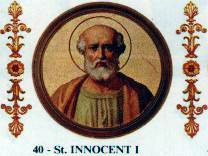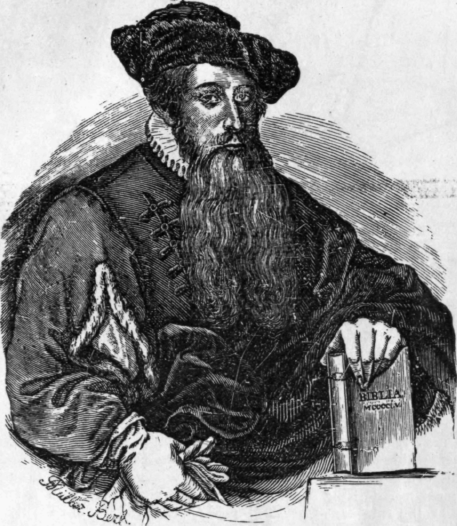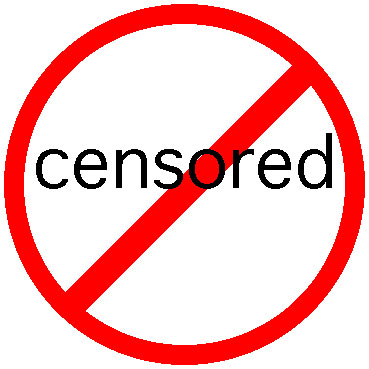Index
Librorum Prohibitorum
The
first time we talked about the “index” in class, I was immediately interested,
and I’ve been thinking about it and even reading about it since. I think it’s a great way to transition from
written cultures and knowledge directly into more print-based culture.
The opening pages of the document
The
origins of the index are a little unclear.
The idea of avoiding “bad books” is old; we can even see it in the
Bible. In Acts 19:19, some of Paul’s
converts who were into “curious arts” actually brought their books forward and
burned them as part of their conversion process.
I
found several sources of good information about the Index, and one of the best
was the Encyclopedia. (online article here) According to the encyclopedia, the index is:
A List of books once forbidden by Roman Catholic Church authority as
dangerous to the faith or morals of Roman Catholics. ... Compiled by official censors, the Index was an implementation of one part of
the teaching function of the Roman Catholic Church: to prevent the
contamination of the faith or the corruption of morals through the reading of theologically erroneous or immoral
books.
 |
| Saint Innocent I was instrumental in deciding which books were apocryphal. |
It seems that the
original idea of index may have started with the Apocrypha, when certain texts
were deemed incorrect and heretical, and thus unfitting for use as scripture,
or canon. In connection with apocryphal
writings, Pope Innocent I wrote a list of prohibited texts in the early 5th
century, and Pope Gelasius I made a more complete list of recommended and
banned books as early as the mid-5th century that is sometimes
called the “First Roman Index.”
 |
| Gutenberg |
Two major factors
influenced the creation of the formal index.
First, Gutenberg’s printing press and the subsequent printing revolution
took the copying of books completely away from the clergy (a trend that had
begun centuries earlier, but which was brutally accelerated by printing). Second, the protestant Reformation began in
the first part of the 16th century, which made it essential, in the
eyes of many leading members of the Church, to control what books people were
reading.
 |
| Luther; as a leader in the Reformation, he was one of the catalysts in the formalizing of the Index. |
(Interestingly,
the index was preceded by several regional movements. Early indices appeared in the Netherlands,
Venice, and Paris during the 16th century. Also at this time, as we discussed in class,
the English Crown tried to control the flow of printed books by regulating who
could print and where.)
The first official
and church-wide index was written under the direction of Pope Paul IV, in
1559. An inherent assumption was that if
the author embraced heretical or impure ideals, all of his works were
contaminated and dangerous for good Catholics to read. To that end, the entire works of something
like 500 authors were included, in addition to other individual books. Only five years later, a general feeling that
the censorship was entirely too harsh caused the Pauline index to be revised
and replaced with the Tridentine Index,
under Pope Pius IV.
The index
continued to have full force of doctrine until 1966, when a declaration was
issued that ‘abolished’ the index.
However, this was in no way to be considered an endorsement of the books
formerly on the index; instead, the faithful members were left to their own
consciences to avoid books that could damage their faith, and the index was now
intended to be used as a sort of guideline as to the type of books that should
be avoided.
 |
| Since 1966, the Index is more of a historical document than an actual attempt at censorship. |
While I think many
in our culture, especially here at BYU, might find unilateral censorship of
books to be shocking, especially at such a large scale, I don’t think it is as
strange as it seems, after the decree of 1966. After the declaration, when there was no
longer a specific list to be consulted, isn’t it similar to what our Church
leaders in the Church of Jesus Christ of Latter Day Saints have told us? They rarely (if ever?) condemn specific books
or music or movies, for example, but they do give a very detailed idea of what
types of things might be inappropriate (as in this talk by President Ezra Taft Benson. Do a search for r-rated movies, and you might be surprised what you find ^^). What do you think? How big do *you* feel like the differences
really are?
See also:
David Dusto, “Index
Librorum Prohibitorum: The History, Philosophy, and Impact of the Index of Prohibited
Books”, 07 August 2008. http://www.unc.edu/~dusto/dusto_prague_paper.pdf

You brought up some good points Brett! I think that although a lot of the censoring that the Catholic church did was in an attempt to control access to knowledge for those they had power over, I think some of what they were doing was just trying to keep people from losing faith (some may question if what they deemed inappropriate was misguided or not), but that's really not much different than the things our LDS leaders council us to keep our distance from.
ReplyDeleteCounseling to keep our distance from things that can shake our faith and banning and destroying the things that are detrimental to us are two entirely different things. We do not just go and destroy all the evil things in the world because there would be no challenge in our lives if all the potential evil things were destroyed.
ReplyDeleteYou know, ever since learning that the Catholic Church once didn't want the public to learn how to read since they didn't want them to know that what they were teaching wasn't exactly truth (of course not all the Catholic priests were like that, but there were definitely some), I just always assumed the Catholic Church as..basically evil.
ReplyDeleteAfter reading your post it definitely made me rethink a couple of my former opinions. Perhaps their actions were done to preserve the faith of their members. Very interesting topic.
What is the difference then between preserving the faith and the desire for more control by withholding information/new knowledge?
Hi Brett, this is David, author of the paper listed at the end of your post. I'm glad you found it useful; I enjoyed writing it after touring Prague and seeing some of the censorship vaults at religious libraries where prohibited books were quarantined.
ReplyDeleteWe see an interesting parallel in modern times with nations such as China censoring/filtering the Internet. From our perspective, it's repressive, but the official Party line is that it's done to "protect" the Chinese people from dangerous concepts and "inaccurate" information. I just hope that their censorship does not last as long as the Index lasted...